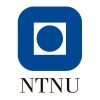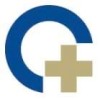
Noninvasive Methods in Diagnosing Coronary Heart Disease in Diabetic Patients
Type 2 DiabetesThe purpose of this study is to investigate the prevalence of cardiac disease/coronary artery disease and diagnostic yield of different non-invasive methods in patients with type 2 diabetes 40-75 years of age at examination. Exercise tests, Doppler echocardiographic examination with Tissue Velocity Imaging, stress Echocardiography, transthoracic Doppler of coronary arteries with coronary flow reserve, and cardiac MRI with late enhancement at rest, and perfusion after vasodilatation stress will be used in the study. A subpopulation will in addition measure forearm vasodilation(FMD) and CFR before and after 4 months of exercise training.

Rubidium-82 Position Emission Computed Tomography (PET) Versus Gated, Rest / Stress Technetium 99-m...
Coronary Artery DiseaseMyocardial Ischemia1 moreMany stress tests being done today have two parts, the stress test and the pictures of your heart. The investigators are comparing a newer technique to obtain the pictures (PET imaging) to the standard method (SPECT imaging). However, it is not known if the new test is better than the old test. It is important to have a standard to compare these tests to, and that is why people who will be getting a cardiac catheterization are being asked to participate. The information about your arteries from the cardiac catheterization will be used to judge which stress test is better. The investigators hypothesize that the newer method (PET imaging) will be more accurate than the old method (SPECT) in detecting heart disease.

Perioperative Myocardial Ischemia in Isolated Systolic Hypertension
HypertensionMyocardial IschemiaDuring or after surgery, patients may suffer heart attacks or other heart complications, increasing the hospital stay by 11 days on average and costing an estimated US$20 billion in 1990.Many risk factors have been identified but there are no properly conducted studies to look at Blood pressure (BP) as a risk factor around the time of surgery. The investigators believe there is a good possibility that systolic BP (SBP) is a risk factor but currently unrecognized. When measuring BP, two numbers are obtained. The upper number is called SBP and a lower number called diastolic BP (DBP). If the numbers are high, this means that the patient has a high BP or hypertension. If the SBP is high while DBP is normal, it is called isolated systolic hypertension (ISH)> ISH is increasingly recognized as a major risk factor for heart problems. The relationship between ISH and heart complications around the time of surgery is poorly understood. Previous studies did not look at such a relationship. Because of that, there are no guidelines for ISH management at the time of surgery. Generally, these patients go through surgery as if they have no increased risk. Studies are starting to show that the bulk of these heart complications happen in patients thought to have low risk factors not yet identified, including ISH. The investigators believe that the oxygen supply to the heart can be compromised around the time of surgery in ISH patients Chemicals known as stress hormones are secreted around the time of surgery, increasing oxygen needs in the heart and may make the oxygen supply to the heart muscle critical (know as myocardial ischemia). This in turn may result in a heart attack and death. Studies have shown that patients with myocardial ischemia stand a 9-fold increase in odds ratio of suffering a heart attack, worsening of angina, or death. This study aims to compare the incidence of myocardial ischemia in patients with ISH and normal BP patients around the time of surgery using a special heart monitor. In addition, the study aims to determine the prevalence of ISH among surgical patients and to document complications like heart attacks, heart failure, stroke and death after surgery. This research project will be conducted at the Ottawa Hospital by a multi-disciplinary research group (perioperative research group)which includes anesthesiology, cardiology, general surgery and epidemiology. The research group secured HSFO funding for this study.

EXCEL Clinical Trial (Universal Registry)
Chronic Coronary OcclusionLeft Main Coronary Artery Disease7 moreThe purpose of the Universal Registry is to assess the proportion and reasons for which subjects with angiographically significant ULMCA disease requiring revascularization during the time course of this study are not randomized; to compare the baseline characteristics of subjects; and to assess the variability in randomization eligibility and treatment patterns.

Utility of a Molecular Personalized Coronary Gene Expression Test (Corus CAD or ASGES) on Cardiology...
Angina PectorisCoronary Artery Disease6 moreTo investigate whether the use of Corus CAD (Age/Sex/Gene Expression score - ASGES) blood assay changes the diagnostic testing pattern in patients referred to a cardiologist for the evaluation of chest pain or anginal equivalent symptoms.

COroNary CT Angiography Evaluation For Clinical Outcomes: An InteRnational Multicenter Registry...
AtherosclerosisCoronary Artery Disease1 moreThe CONFIRM study was developed to examine the prognostic value of cardiac computed tomographic angiography (CCTA) findings for prediction of future adverse cardiac events related to coronary artery disease (CAD) in a large, international patient population. The purpose of this multicenter registry is to correlate coronary and non-coronary cardiac findings by CCTA with demographic and clinical data for refinement of risk stratification of individuals with suspected or known CAD.

Diagnostic Study of Rapid Regadenoson Stress Cardiovascular Magnetic Resonance (CMR) to Detect Coronary...
Coronary Artery DiseaseThis study is designed to evaluate the feasibility and diagnostic performance of a novel rapid regadenoson stress CMR protocol for detecting of obstructive coronary artery disease.

Characterization of Ischemia Related Changes in Esophageal Electrocardiography
Coronary Artery DiseaseEsophageal electrocardiography (eECG) has important advantages compared to standard ECG recordings. Coronary artery disease leading to myocardial ischemia is very common and has potentially severe consequences for patients. To date, the investigators don't know the influence of ischemia on the eECG. The goal of the present study is to assess ischemic changes of the eECG induced by balloon occlusion of coronary arteries in patients undergoing coronary angiography.

Impact of INsulin Sensitivity on Cardiovascular Risk Markers During 10-20 Years of FOllow up
Diabetes MellitusHypertension2 moreThe purpose of this study is to identify risk factors for insulin resistance and to investigate the influence of insulin sensitivity on development of cardiovascular risk markers like blood pressure, heart rate, body build (weight, BMI, waist-hip ratio, skinfold thickness), reduced insulin sensitivity, diabetes mellitus, dyslipidaemia, and sympathoadrenal activity or manifest cardiovascular disease among young men during 10-20 years.

The Acute Cardiovascular Effects of Marathon Running Using Magnetic Resonance Imaging
Myocardial IschemiaLeft Ventricular Systolic Dysfunction1 moreUsing blood testing and cardiac magnetic resonance imaging (MRI), the investigators aim to determine if there are necrotic areas of myocardium in participants who complete a marathon. In addition, the investigators aim to describe the acute and chronic structural abnormalities that occur as a result of endurance training. The study hypothesis is that myocardial necrosis is present in runners completing a marathon competition.
